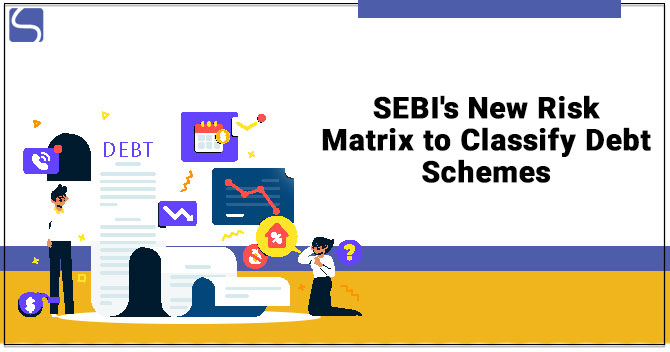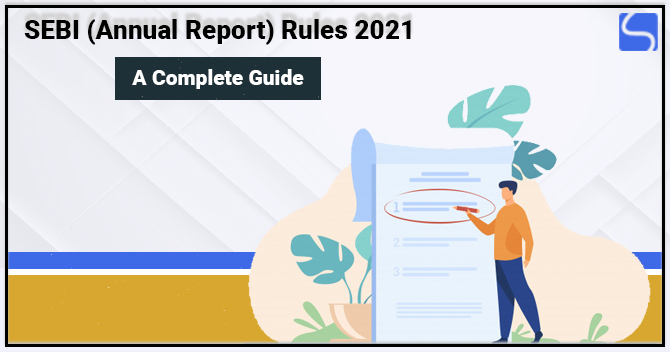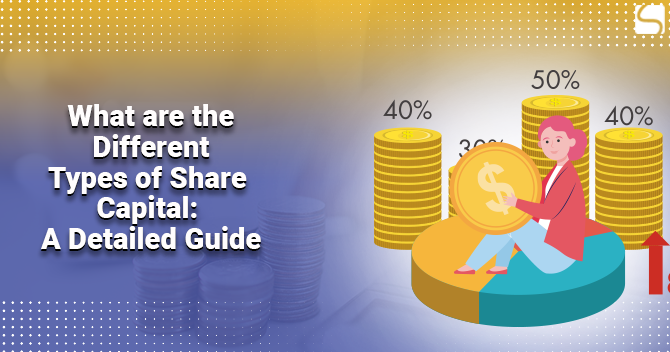SEBI’s New Risk Matrix to Classify Debt Schemes

Karan Singh | Updated: Jun 24, 2021 | Category: SEBI Advisory
In a notice issued by the capital market regulators, SEBI (Securities and Exchange Board of India) came out with a new risk matrix to classify the debt mutual funds, which take into account both interest rate and credit risk. This new risk matrix directs a long-standing gap in the regulations that allowed fund houses to have credit risk paper in debt schemes determined just by duration.
Table of Contents
An Overview
In future, mutual funds will classify debt mutual funds schemes via a risk matrix based on the risk of interest rate and credit. It permits investors to pick suitable debt funds to get short-term and medium-term financial goals to depend on their risk tolerance.
As per the notice issued by the SEBI (Securities and Exchange Board of India[1]), mutual funds should mandatorily show a 9 level table or matrix for debt mutual funds scheme starts from 1st of Dec, 2021. It would show the interest rate risk and credit risk linked with the debt mutual fund schemes.
Why SEBI Introduced a Circular of New Risk Matrix for Debt Schemes?
There are numerous investors who put their money in debt mutual funds without specifically understanding the investment. For instance, you may think that investing in debt funds is safe; however, such funds could be exposed to both interest rate risk as well as credit risk. If you have funds of credit risk that are similar to debt manual funds, primarily invest in corporate bonds of a beneath credit rating for a high return. In other words, credit risk is the chances of suffering a loss as the borrower may default on the interest payments and principal. A lot of investors have suffered losses as they put their money in credit risk funds without understanding the risks involved in the investment.
Debt funds are also uncovered to interest rate risk. For example, debt funds invest in bonds of a lengthy Macaulay duration. It represents how long it takes to get the bond cost from its cash flows. But, debt funds that invest in bonds with longer Macaulay duration are exposed to interest rate up and down in the economy.
The SEBI has introduced the risk class matrix for debt schemes for the investors in debt mutual funds to pick appropriate investments based on their profile risk. SEBI wants to underline the risk a fund manager may take when directing a debt fund. Debt fund managers may not take any risk beyond an assumed level which they set.
How will the SEBI’s New Risk Matrix for Debt Funds Work?
According to the SEBI rules, all debt funds schemes will be categorised based on the potential risk class matrix. It includes parameters based on the maximum interest risk is measured by the Macaulay time and the maximum credit threat by the credit risk value of the debt fund scheme.
The rate of interest risk is classified into three buckets:
- The bucket Class 1 has a Macaulay time of up to a maximum of one year. It shall have debt instruments will remaining maturity up to a maximum of three years time;
- The Class 2 bucket has a maximum of Macaulay Duration of three years. It will have debt instruments with a remaining maturity of up to seven years;
- Now, you have the Class 3 bucket, which has a Macaulay Duration of more than three years. The maximum remaining maturity is not fixed yet for this class.
As occurred in the Franklin Templeton Fiasco, the fund managers of debt funds invested in comparatively risky debt to follow higher returns. The new matrix for debt funds will aid investors in recognising the schemes in tiny duration buckets that hold maturity paper of high remaining maturity. It may cause debt fund managers to stick to their investment authorise instead of chasing higher returns in risky fixed-income instruments.
The new risk matrix for debt funds has categorised credit risk into three different classes. Credit risk value greater than twelve, credit risk value more than ten and credit risk value less than o. In other words, the CRV (Credit Risk Value) of the debt fund scheme is the weighted average value of credit risk of each instrument in the portfolio.
Once the scheme of debt mutual funds is placed in any cell, change in the cell would show later in the scheme’s fundamental attributes. Investors can exit the debt fund schemes, which will alter the cell without suffering an exit load as the attributes have altered. But, SEBI has made allowances for mutual funds that hold long-lasting bonds of banks during risk categorisation.
One can know the risk involved with the debt funds once the risk class matrix is presented. It aids the investors in knowing the interest rate risk & credit risk with debt fund investments. The new risk class matrix also represents the risk taken by the manager of the debt fund to manage the investment.
Conclusion
Securities and Exchange Board of India’s circular stated that mutual funds must compulsorily show a nine-level table or new risk matrix for the scheme of debt mutual funds schemes beginning from 1st Dec 2021. It would show the interest rate risk and credit risk linked with the debt mutual fund schemes.
Read our article:All You Need to Know About Tax Liability on Buyback of Shares














